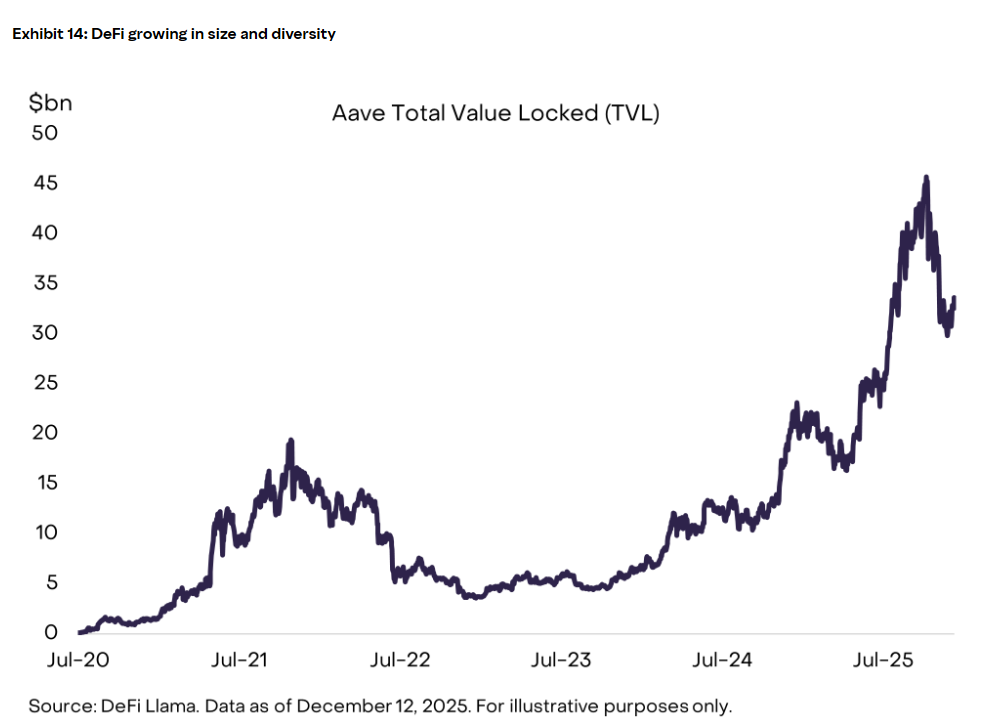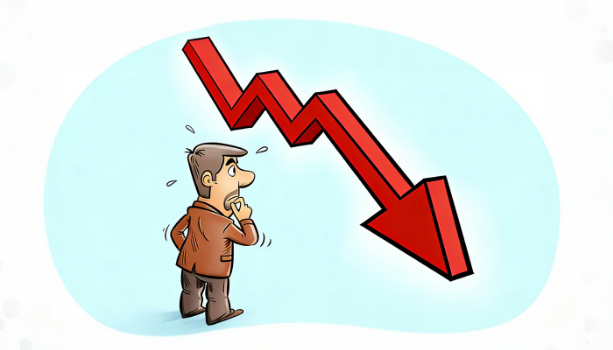The cryptocurrency market is undergoing a severe test. From September 22 to 25, the market experienced intense fluctuations, with Bitcoin dropping to $111,800 at one point, while Ethereum fell below the critical support level of $4,000.
The Fear and Greed Index fell from a high of 80 to 61, even briefly touching a state of "extreme fear" at 22, contrasting sharply with the market frenzy from a few weeks ago.
01 Market Fluctuations: Plummeting Data and Chain Reactions
The cryptocurrency market recently staged a dramatic scene. On September 22, Bitcoin collapsed from a high of $115,000, dipping to a low of $111,800, with a daily volatility exceeding 5%. As of the time of writing, it has fallen below $109,000.
Meanwhile, Ethereum also plummeted, dropping from around $4,500 to $4,077, and then further breaking the psychological barrier of $4,000 on September 25, hitting a low of $3,969. As of the time of writing, it has also fallen below $3,900, marking a nearly seven-week low.
This crash triggered a massive wave of liquidations. Coinglass data shows that on September 22 alone, the total liquidation amount across the network reached $1.7 billion, setting a new high for the year. Among these, long position liquidations accounted for over 95% ($1.617 billion), while short position liquidations were less than 5%.
The largest single liquidation occurred in the BTC-USDT contract on the OKX exchange, valued at $12.74 million—potentially the instant demise of a whale or institutional account.
The crash was not an isolated event but produced a chain reaction, with the overall market following suit, causing the entire cryptocurrency market to evaporate over $140 billion in market value at one point.
02 Underlying Causes: Three Factors Leading to Market Collapse
The "good news fully priced in" after the Federal Reserve's rate cut is the primary factor. Although the Federal Reserve announced a 25 basis point rate cut at the September meeting, the policy did not sustain the previous risk asset frenzy.
Federal Reserve Chairman Jerome Powell clearly stated that this rate cut is a "risk management" measure, not a signal of aggressive easing, and emphasized that future decisions will be "assessed at each meeting." This cautious stance has cooled market expectations for consecutive large rate cuts, weakening the momentum of traditional funds flowing into the crypto market.
Whale selling behavior triggered the market's sensitive nerves. Glassnode data shows that on September 18, whales holding 1,000 to 10,000 ETH cashed out $1.5 billion in a single day.
When including the actions of larger holders, the total cash-out scale reached $2.15 billion. This concentrated cash-out is reminiscent of the historical moment when ETH broke $3,500 in July, but this time, buying support is clearly insufficient.
Technical resistance and high leverage liquidations amplified the downward effect. Bitcoin's CBD heat map shows a significant supply backlog around $117,000, forming a key resistance zone. Failing to effectively break through this position has undermined bullish confidence.
The high leverage environment has become an "amplifier"; when prices begin to fall, forced liquidations of long positions create a "liquidation waterfall," further driving down prices.
The cooling of institutional fund inflows is also a factor that cannot be ignored. Data shows that since Monday, investors have withdrawn nearly $300 million from Ethereum ETFs listed in the U.S. Since September, the cumulative net inflow into Ethereum ETFs has only been $110 million, while inflows in August exceeded $3.8 billion.
03 Analyst Divergence: End of the Bull Market or Healthy Correction
In the face of the market crash, analysts have shown significant divergence regarding future trends.
Bearish representative and Alphractal founder Joao Wedson warned: "Bitcoin shows signs of cyclical weakness." He pointed out that after the recent rate cut by the U.S. Federal Reserve, there is a lack of upward space.
Wedson emphasized that on-chain indicators such as SOPR profitability decline and the Sharpe ratio decrease indicate cyclical fatigue. Even if Bitcoin sets a new high, profitability will remain low, shifting focus to altcoins.
In contrast, the bullish camp focuses on historical patterns and long-term indicators. Historically, October is usually a strong month for Bitcoin, referred to by traders as "Uptober."
In 2020, Bitcoin soared from $10,500 to $13,800; in October 2023, the asset sharply rebounded from $27,000 to $35,000. If the closing price in September 2025 is above $118,000, historical patterns may repeat.
Some traders point out that the liquidity impact of the Federal Reserve's rate cut will not inject into the crypto market until mid-December. Sideways fluctuations may last 30 to 60 days, with a significant bottom potentially appearing around October 17.
There are also views that the core driving force of this bull market has shifted from retail investors to institutions. Asset management giants like BlackRock continue to increase their holdings through Bitcoin spot ETFs, with a net inflow of $246 million on a single day, September 19; Ethereum ETFs saw a net inflow of $478 million during the same period.
This structural change reduces market volatility but also extends the cycle span.
04 Future Direction: Market Paths Under Two Scenarios
In the short term, the market may face bottom fluctuations and tests of key support levels. Technical analysis shows that $110,000 is a key support level for Bitcoin, which has been validated multiple times over the past few months.
If it breaks below, it may dip into the $101,000-$105,000 range. Ethereum needs to hold above $4,000; if it fails, it may test the 120-day moving average and the 0.382 retracement level around $3,800.
In the medium-term outlook, the market may experience wide fluctuations. In the first half of 2026, Bitcoin may fluctuate in the range of $80,000 to $120,000, while ETH may maintain a wide range of $4,500 to $6,000.
The volatility of altcoins will further amplify, with daily price swings exceeding 15% becoming the norm.
The most pessimistic scenario is that starting in the second half of 2026, the global rate hike cycle restarts, leading to continued tightening of liquidity, and the cryptocurrency market will officially enter a prolonged bear market. Bitcoin could drop from its cyclical peak ($180,000-$200,000) to $70,000, a decline of over 60%.
05 Investment Strategy: Three Dimensions of Risk Management
In such a market environment, risk management is particularly important. The following strategies are recommended:
Reduce leverage usage. Avoid using high leverage during increased volatility; the painful lessons from long position liquidations highlight the priority of risk control. Of the $1.7 billion in daily liquidations, long positions accounted for over 95%, illustrating the deadly risk of high leverage during extreme fluctuations.
Adopt a staggered operation strategy. Take profits in batches on profitable positions, keeping cash on hand for potential buying opportunities during pullbacks. After rapid deleveraging in the market, attention should be paid to the pace of emotional recovery and liquidity restoration.
Focus on fundamentally strong assets. Prioritize projects with real applications and strong compliance (such as BTC, ETH, BNB), and steer clear of purely speculative hype. In a bear market, valuable projects will show stronger resilience against declines.
Investors should also pay attention to on-chain indicators, such as SOPR and the Sharpe ratio, as tools for risk assessment. Additionally, a surge in net outflows from exchanges may reflect a rising "coin hoarding" sentiment, serving as one of the reference indicators for assessing long-term market confidence.
In Conclusion
The future market trajectory will depend on the combined effects of multiple factors: the Federal Reserve's subsequent policy pace, institutional fund flows, and whether key support levels can be maintained. After rapid deleveraging, the market needs time to repair emotions and liquidity.
Historical experience shows that the crypto market has never risen straight up but has redistributed wealth through dramatic fluctuations. For investors, the current moment is both a period of risk and opportunity.
As one trader put it: "Economic data is no longer that important; in the face of the roaring historical train, embracing the bubble in line with the trend may have become the most important issue for our generation."
Please note: The content of this article is for reference only and does not constitute any investment advice. The risks of digital asset investment are high; investors should make cautious decisions and bear the risks themselves.
免责声明:本文章仅代表作者个人观点,不代表本平台的立场和观点。本文章仅供信息分享,不构成对任何人的任何投资建议。用户与作者之间的任何争议,与本平台无关。如网页中刊载的文章或图片涉及侵权,请提供相关的权利证明和身份证明发送邮件到support@aicoin.com,本平台相关工作人员将会进行核查。




